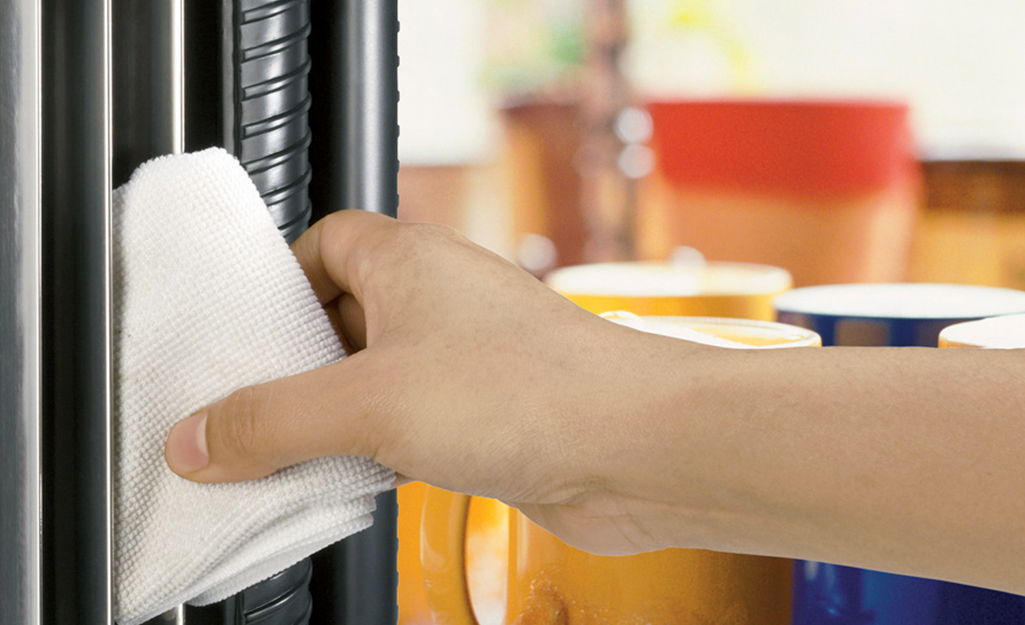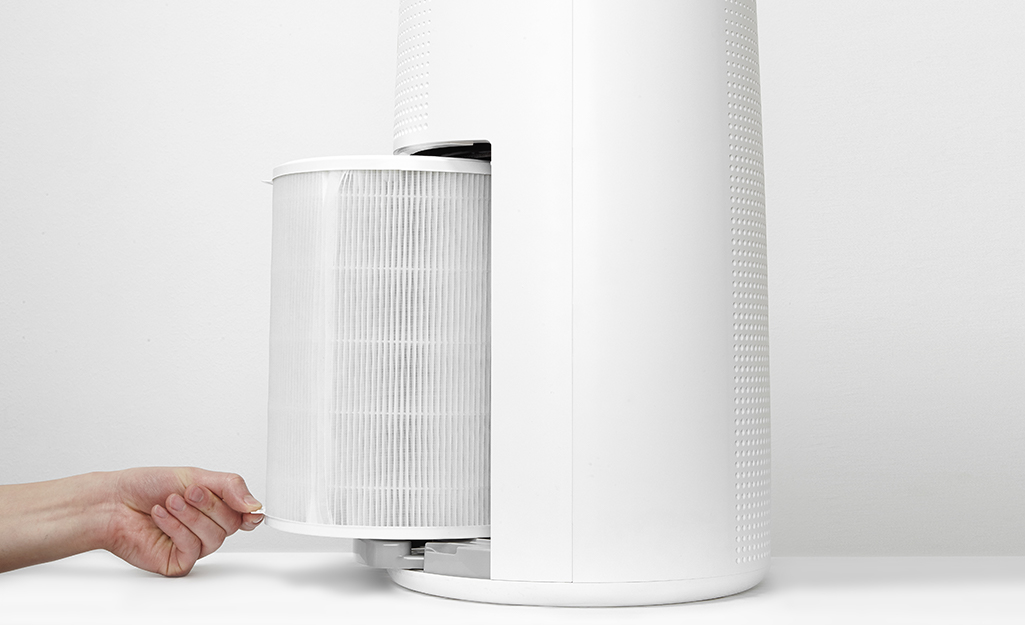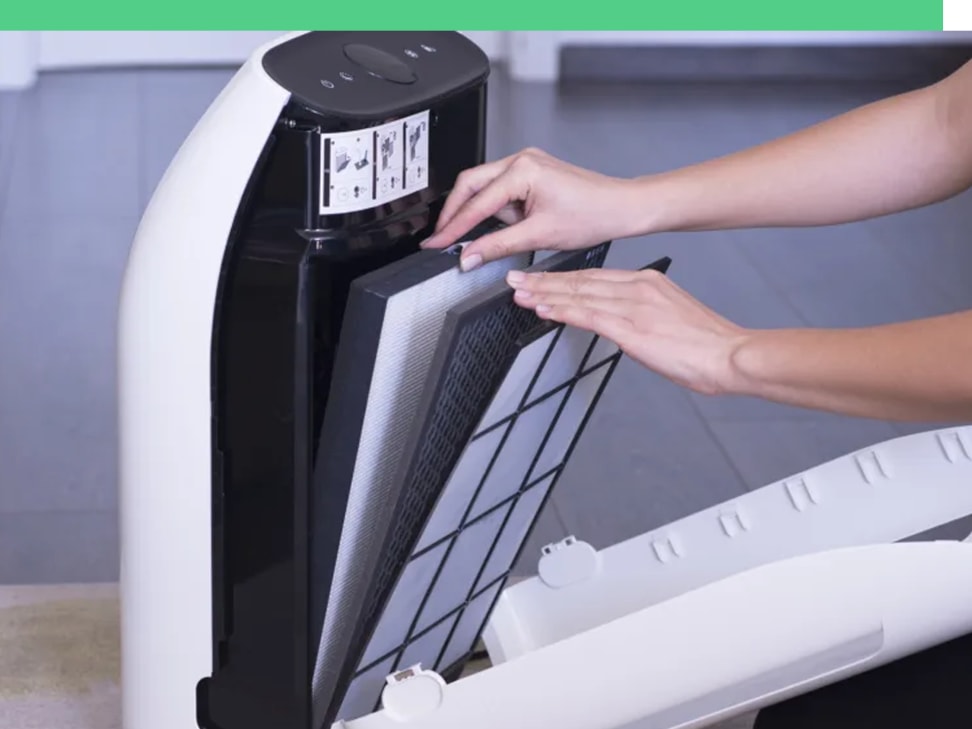You might be curious about the exact upkeep procedures needed if you possess an air purifier with washable filters. After all, the practical quality of washable filters ensures a stress-free cleaning procedure. We shall examine whether specific upkeep procedures are required for air purifiers with washable filters in this post. By the conclusion, you will be able to maintain your air purifier to its highest potential. then let’s get going!

Cleaning the Washable Filters
Cleaning Frequency
Cleaning the washable filters on your air purifier on a regular basis is crucial to maintaining its effectiveness. Depending on variables like the air quality in your environment and how frequently you use the purifier, there may be a difference in how often you should clean the filters. It is advised to clean the washable filters every one to three months as a general rule.
Removing the Filters
To protect yourself, it’s crucial to unplug your air purifier before you begin cleaning the washable filters. Find the filter container after unplugging the purifier. The filters in the majority of air purifiers are simple to reach and may be taken out by sliding them out or releasing a catch. To make reinstallation simpler in the future, carefully remove the filters from the purifier while noting their orientation.
Rinsing the Filters
Rinse the filters under running water after removing them. To get rid of any dust or particles caught in the filters, gently wash them with warm water. As they can harm the filters, stay away from applying harsh chemicals or abrasive brushes. You can also briefly soak the filters in a solution made of water and mild detergent if they have odors or stains that won’t go away. For precise cleaning advice, however, always refer to the manufacturer’s instructions.
Drying the Filters
It’s critical to completely dry the filters after rinsing them before reinserting them in the air purifier. Place the filters in a well-ventilated area after shaking off any extra water. The filters should ideally be left to naturally air dry. Avoid using heat sources, such as a hairdryer, as they may cause the filters to warp or get damaged. Reinstalling the filters in the air purifier is possible once they are totally dry.
Reinstalling the Filters
The filters should be carefully reinstalled into the filter compartment with their correct orientation. Verify that all latches and locking mechanisms are correctly engaged and that the filters are firmly in place. After appropriately installing the filters, you can re-start the air purifier’s function by plugging it in.
Cleaning the Air Purifiers Unit
Unplugging the Purifier
It is crucial to unplug the purifier unit from the power source before you start cleaning it. This guarantees your security and averts any electrical accidents when cleaning. You can start cleaning the purifier’s exterior and inside parts after unplugging it.
Cleaning the Exterior
You can use a soft, wet cloth or sponge to wipe the outside of your air purifier. Wipe the purifier’s surface gently to get rid of any dust or filth that has perhaps gathered over time. Use soft soap or a cleaning solution if there are any obstinate stains or markings. However, be careful not to introduce any moisture into the purifier’s apertures or vents as this could harm the internal parts.
Cleaning the Interior
For the purifier to continue performing at its best, the inside must be cleaned. To clean any dust or dirt from the interior parts, use a soft brush or a vacuum with a brush attachment. Pay close care to any non-washable filters and the fan blades. Remove any collected dust or debris with care, being careful not to restrict the airflow.
Checking the Fan
Checking the fan for damage or obstructions is an essential element of the purifier cleaning procedure. Rotate the fan blades gently while checking them for wear or bending. It could be required to get in touch with the manufacturer for repairs or a replacement fan if you spot any damage. Maintaining optimum airflow and the effective operation of the air purifier depends on keeping the fan clean and in good condition.
Cleaning the Controls
To maintain its operation, your air purifier’s controls also need to be cleaned on a regular basis. Wipe the control panel and buttons gently with a delicate, somewhat wet cloth. Avoid using aggressive cleaning solutions or a lot of moisture, since these can harm the control panel. The purifier performs better and lasts longer if the controls are kept clear of dust and other particles.
Replacing Filters (if applicable)
Determining Filter Replacement Period
Despite the fact that washable filters can be washed and reused, there may come a point when they need to be changed. The suggested filter replacement interval will be mentioned in the manufacturer’s instructions. Depending on usage and quality, washable filters commonly have a lifespan of one to five years. Keep an eye on the filter’s life expectancy and efficacy at removing impurities. It could be time to replace the filters if you detect a drop in air quality or if they no longer seem to be doing their job of capturing particles.
Ordering Replacement Filters
It’s crucial to order the appropriate replacement filters when it’s time to change the ones in your air purifier. To find the precise filters required for your model, consult the owner’s manual or the manufacturer’s website. Ordering the new filters in advance will ensure that you have them on hand when it comes time to swap out the old ones. It is guaranteed that you will receive authentic filters that are compatible with your air purifier when you order directly from the manufacturer or from authorized merchants.
Replacing the Filters
Refer to the manufacturer’s instructions for the right way to replace the new filters once you’ve received them. Prior to starting the replacement process, unplug the air purifier. The majority of the time, this entails taking the old filters out of their compartments and replacing them with the new ones. Be careful to maintain the proper alignment and make sure the filters are firmly in place. You can plug in the air purifier and resume using it with increased filtration once the new filters have been inserted.
Checking the Air Quality Sensor
Understanding the Sensor
Air quality sensors are a common feature in contemporary air purifiers. These sensors keep track of the amount of pollutants in the air and modify the purifier’s operation as necessary. For the indoor environment to remain clean and healthy, these sensors are crucial. Consult the owner’s handbook to learn more about the air quality sensor in your purifier. To efficiently monitor and enhance your indoor air quality, be aware of the many readings and indicators the sensor provides.
Regular Calibration
Regular calibration is required to obtain reliable results from the air quality sensor. How to accurately calibrate the sensor is described in the owner’s manual. Usually, this entails calibrating the sensor according to the manufacturer’s instructions or resetting the sensor to its factory default settings. The sensor continues to deliver accurate data with regular calibration, enabling you to make decisions about how to operate your air purifier.
Cleaning the Sensor
The air quality sensor’s accuracy can be harmed over time by dust and debris accumulation. Periodic cleaning of the sensor is essential to preserving its functionality. For further directions on cleaning the sensor, refer to the owner’s manual because different models could have different cleaning needs. Most of the time, wiping away any dust or particles from the sensor with a soft, dry cloth is adequate. Avoid using any cleaning products or liquids as they could harm the sensor.

Inspecting the Power Cord
Checking for Damage
Your air purifier’s power cord is an essential part that guarantees safe and dependable functioning. Check the power cord frequently for any signs of damage. Look for cuts, exposed or frayed wires, and other obvious problems. It is essential to replace the power cable right away if you spot any damage to prevent any electrical hazards.
Replacing the Cord
It is crucial to get a replacement power cable if you discover that the one that came with your air purifier is damaged. To receive a replacement cord that is compatible, get in touch with the manufacturer or a skilled technician. Make that the new power cord complies with the manufacturer’s requirements for safety. To ensure the new cord is installed correctly, it is advised to get expert help if you are unsure about replacing the power chord yourself.
Dealing with Odor or Mold Growth
Identifying Odor or Mold Issues
It is critical to solve any problems as soon as possible if you smell anything unpleasant or think there may be mold development around or inside your air purifier. Mold growth can be caused by excessive humidity or poor upkeep, whilst bad odors may suggest the accumulation of dirt, debris, or stagnant water. Determine the cause of the odor or mold and take the necessary steps to get rid of it.
Cleaning the Purifier
The purifier should first be completely cleaned before odor or mold problems are addressed. To clean the exterior, interior, and washable filters, go by the cleaning guidelines given in the preceding sections. Pay special attention to any wet or difficult-to-reach spots where mold development may occur. To get rid of any unpleasant smells or mold stains, use a light detergent or cleaning solution. Before putting the purifier back together, properly rinse and dry it.
Using Air Purifier Safe Cleaners
To get rid of mold or persistent odors, extra cleaning can be necessary in some situations. There are cleansers on the market designed expressly for cleaning air purifiers that are safe for use with air purifiers. These cleaners are made to eliminate mold and effectively remove odors while being gentle on the parts of the purifier. To guarantee safe use and handling of the cleaner, according to the manufacturer’s recommendations.
Contacting Customer Support
You may need to get in touch with the air purifier’s customer service if you’ve utilized the recommended cleaners and the cleaning instructions but are still having odor or mold problems. Depending on your particular circumstance, they may provide more advice or suggest extra troubleshooting actions. For precise guidance, always turn to the manufacturer’s support resources.

Maintaining Proper Airflow
Checking for Blockages
Your air purifier must have adequate airflow in order to work properly. Check frequently for obstructions that can prevent air from passing through the purifier. Check for dust, dirt, or obstructions in the vents, apertures, and intake locations. To clear any accumulated dirt, use a soft brush or a vacuum with a brush attachment. By removing any obstructions, you can maintain ideal airflow and stop the purifier from working too hard.
Cleaning the Vents
It is crucial to frequently clean the vents of your air purifier in addition to checking for obstructions. The vents may become clogged with dust and debris, obstructing airflow and decreasing the effectiveness of the purifier. To gently wipe away any dust or debris from the vents, use a soft brush or a wet cloth. Be careful to completely remove the dust rather than pushing it deeper into the purifier. Cleaning the vents regularly guarantees unhindered airflow and top efficiency.
Positioning the Purifier
The airflow and efficiency of your air purifier can also be impacted by where it is placed in the room. Place the air purifier in a location where it can efficiently circulate clean air while drawing in the most contaminated air possible. Keep the purifier away from drapes, furniture, and other obstructions that could restrict airflow. Make sure there is sufficient room around the purifier for proper airflow. The air quality is improved and the purifier’s performance is maximized when it is properly positioned.
Keeping the Surrounding Environment Clean
Dusting and Vacuuming
Dusting and vacuuming the area around your air purifier on a frequent basis are crucial to its effectiveness. The air quality in your house can be harmed when dust and other particles congregate on surfaces and become airborne. Pay attention to places that tend to collect more dust, such as carpets, upholstery, and shelves, when you often dust and vacuum. Reduce the amount of dust in the air to make your air purifier operate more effectively.
Reducing Indoor Pollutants
There are various other steps you may do to reduce indoor pollution in addition to dusting and vacuuming. As they can emit dangerous compounds into the air, avoid smoking indoors and use chemical-based cleaning products as little as possible. When possible, switch to natural cleaning products or non-toxic alternatives. Keep humidity levels under control since too much moisture can serve as a haven for mold and other allergies. Open windows and exhaust fans frequently to ventilate your home, especially in damp areas like bathrooms and kitchens. By following these instructions, you can maintain a cleaner home atmosphere and get most out of your air purifier.

Regular Performance Evaluation
Monitoring Air Purifier Functionality
Maintaining clean and wholesome indoor air requires often checking your air purifier’s operation. Pay attention to any modifications in the quality of the air, odd noises, or decreased airflow. Investigate the matter right once if you detect a decline in the purifier’s performance or any other problems. To guarantee optimal filtration effectiveness, keep note of the schedule for filter cleaning and replacement. You can prevent problems from occurring in the future by keeping an eye on the air purifier’s performance.
Seeking Expert Assistance
It is recommended that you seek professional advice if you have any recurring problems or have questions about the effectiveness of your air purifier. For assistance, speak with the manufacturer’s customer service department or a certified technician. When it comes to your particular air purifier model, they can offer expert knowledge and troubleshooting methods. By seeking professional help, you can be confident that any underlying problems are resolved successfully, maximizing the effectiveness and lifespan of your air purifier.
Storing the Air Purifier
Preparing for Storage
To keep your air purifier in good condition if you need to store it for a long time, you must make the necessary preparations. To get rid of any dust or debris, thoroughly clean the purifier as instructed in the prior sections. Before continuing, make sure that all the filters are dry and clean. The purifier should then be carefully packed in its original packing or an appropriate storage container after being unplugged from the power source. If utilizing a storage container, ensure sure it is dry and clean to stop mold or mildew from growing. Keep the air purifier out of direct sunlight and severe temperatures in a cool, dry location.
Choosing the Right Location
Consider elements like humidity levels, temperature swings, and sunlight exposure when choosing a spot to keep your air purifier. A cool, dry location with a moderate temperature and little exposure to light are ideal storage conditions. Avoid keeping the air purifier in garages or basements with high amounts of humidity or in places where temperature extremes are common. The functionality of the purifier is preserved by choosing the proper storage position, which also guarantees that it will be accessible when needed.
In conclusion, regular maintenance is essential to ensuring your air purifier operates at peak efficiency and is successful in purifying the air in your house. Important maintenance responsibilities include routinely cleaning the washable filters, the purifier unit, and the air quality sensor, testing and replacing filters as needed, evaluating the power cable, and taking care of odor or mold issues. The longevity and effectiveness of your air purifier are also influenced by maintaining optimum airflow, keeping the surrounding area clean, frequently assessing the purifier’s operation, and storing it properly. You may enjoy cleaner, healthier indoor air and extend the life of your air purifier by carrying out these maintenance procedures.
Recommendations: Honeyuan Air Purifier

